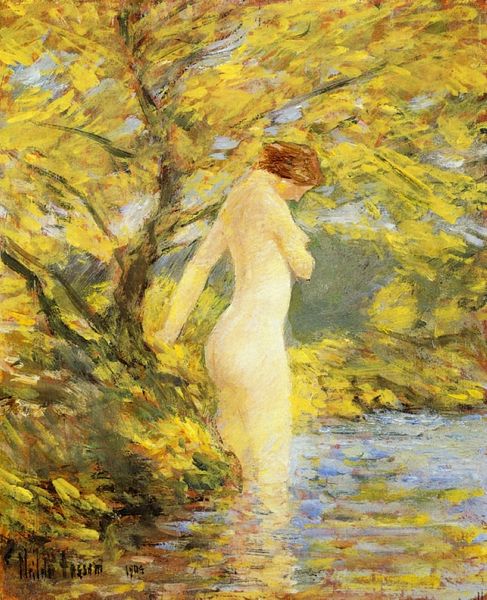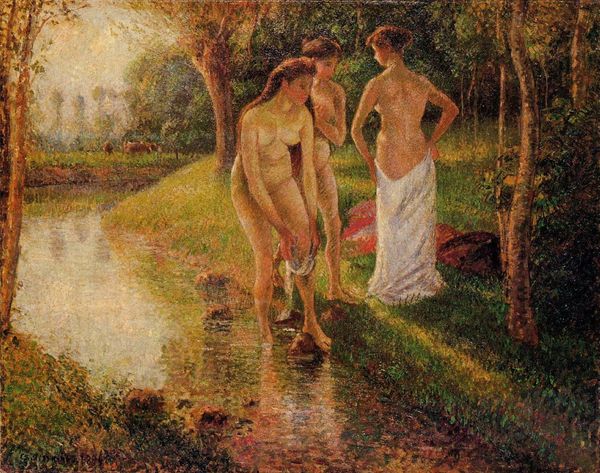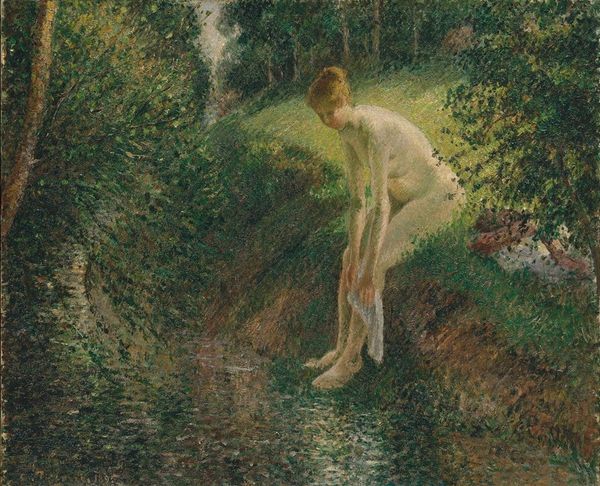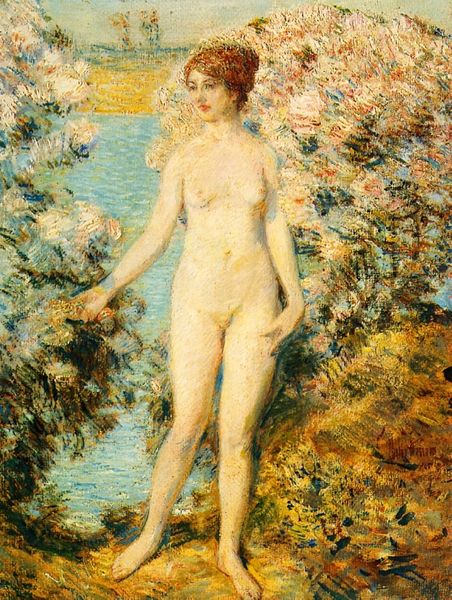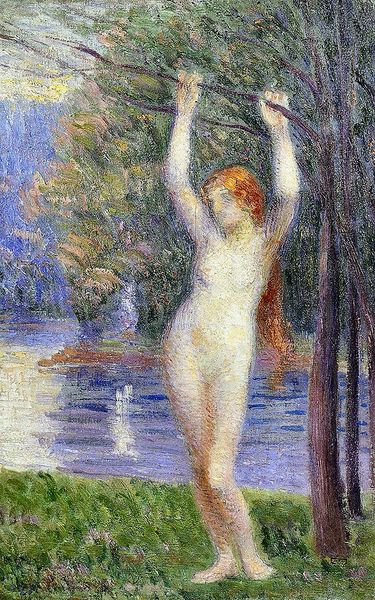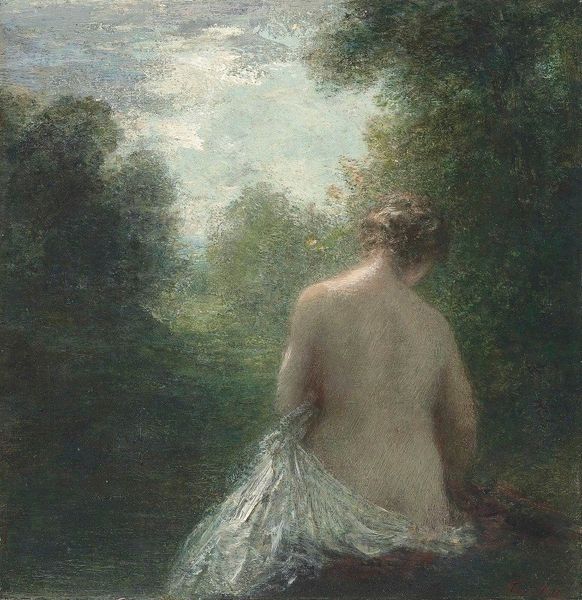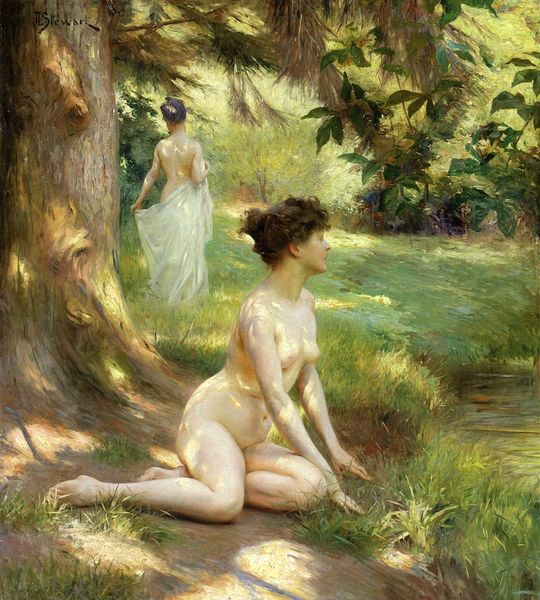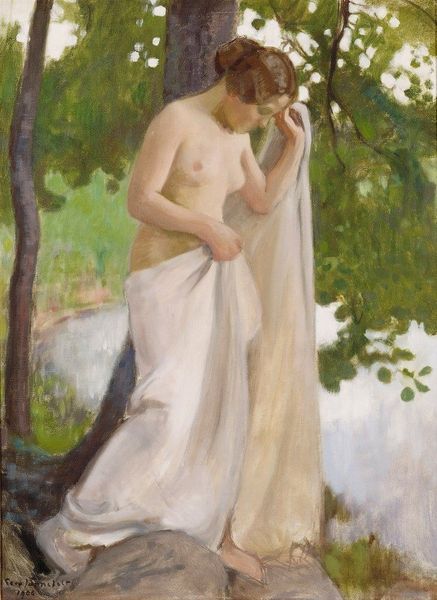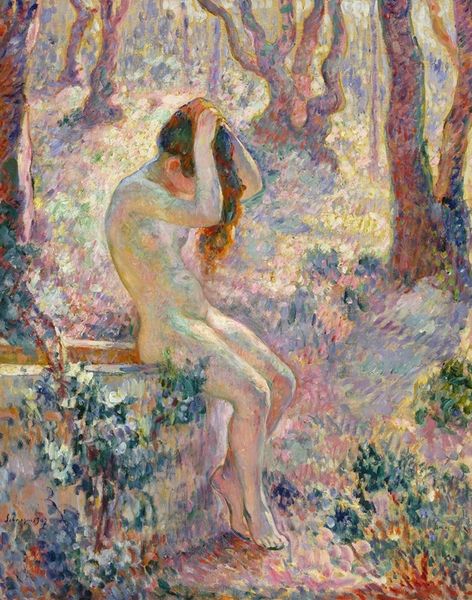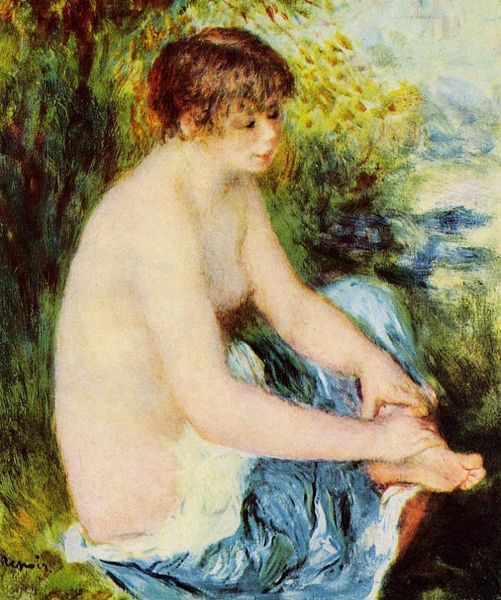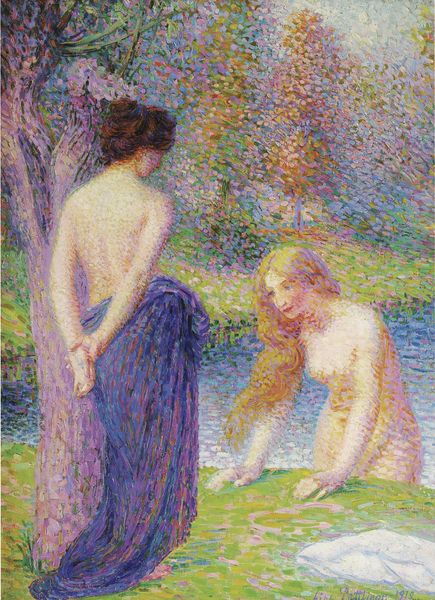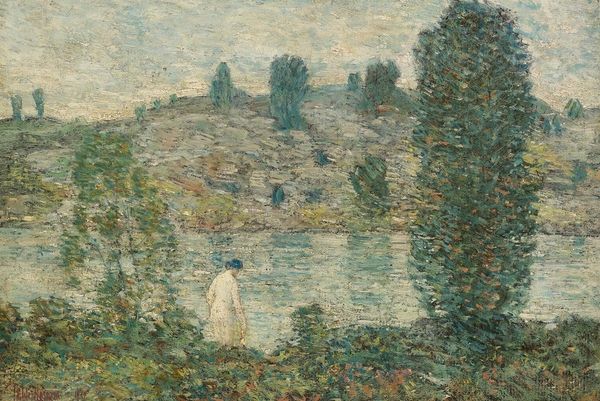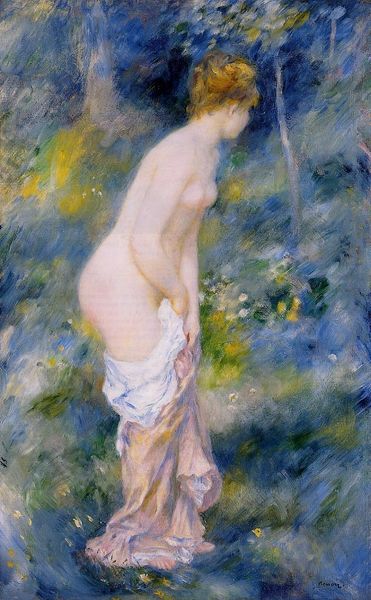
Copyright: Public Domain: Artvee
Editor: We're looking at "The Bather" by Camille Pissarro, painted in 1895 using oil on canvas. The impressionistic brushstrokes are quite visible, creating a shimmering effect. What really strikes me is the figure almost blending in with the surrounding nature; it feels very harmonious. How do you interpret this work through a more formal lens? Curator: Notice how the composition relies on a sophisticated interplay between figure and ground. Pissarro eschews traditional notions of depth; the bather isn't positioned to recede into the landscape but rather exists as an integrated element within it. Consider the brushwork – the staccato touches of color. They unify the various elements. Does the color palette seem consistent, and how does it create space? Editor: Yes, the predominantly green and earthy tones throughout create a sense of visual cohesion. The variations in value, however, create highlights that suggest depth despite the flattened perspective. But what of the pose; is it classical or modern? Curator: Interesting question. While the subject, a nude bather, hints at classical motifs, the execution is decidedly modern. Observe the lack of idealization in the figure; she is rendered with an honesty and objectivity that departs from academic tradition. In essence, Pissarro is not interested in the nude as an object of desire, but rather as an arrangement of forms and light within the broader pictorial structure. Editor: So the power isn't in the 'what' but in the 'how' of it being painted, the colors, brushstrokes, and its placement within the painting itself. That’s something I need to remember. Curator: Precisely. And by focusing on these formal qualities, we can move beyond mere representation and towards a deeper appreciation of Pissarro's artistic vision. I will surely remember this insightful conversation.
Comments
No comments
Be the first to comment and join the conversation on the ultimate creative platform.
